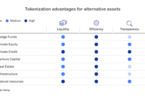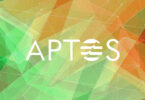At the end of June, the Basel Committee on Banking Supervision published a revised proposal on the capital requirements for crypto asset risk exposures, including tokenized securities. Today eleven trade bodies published comments on the proposals and are not happy.
The bodies include the Global Financial Markets Association (GFMA), the International Swaps and Derivatives Association (ISDA), and the Institute of International Finance (IIF).
Two issues are particularly problematic.
A tax on tokenized traditional assets
The first is for tokenized traditional assets with a proposed 2.5% risk-weighted asset (RWA) increase. It’s argued that it could make engaging with DLT infrastructures unattractive. That’s because one of the objectives of adopting blockchain infrastructures is to reduce RWA restraints and the upfront costs of investment in DLT.
A couple of people have described the 2.5% to Ledger Insights as a “DLT tax”. The associations have requested that this be removed.
In March 2023, the EU is launching a regulatory sandbox, the DLT Pilot regime, and the UK is planning something similar.
The commentary letter states that the Basel proposals “could derail the market and associated regulatory innovation via the introduction of regulatory sandboxes in a few jurisdictions starting in Q1 2023, whereby banks would need to justify additional capital requirements that would result from participation.”
It’s argued that any risks relating to new technology are already covered by the existing prudential framework and risk management systems.
The Cryptocurrency cap
The second issue relates to the total exposure figure for cryptocurrencies other than stablecoins. The Basel Committee’s latest proposal set a limit of 1% gross of Tier 1 capital. In other words, if a bank has hedged all its positions, then both the position and the hedge would count towards the 1%. Instead, the group proposes a 5% net position.
While these are the two biggest issues, several others are raised in the letter. For example, clarification is requested regarding crypto-asset custody.
Blocking banks from crypto custody?
The Basel Committee proposal has this clause (60.4) relating to custody: “For the purposes of this chapter, the term “exposure” includes on- or off-balance sheet amounts that give rise to credit, market, operational and liquidity risks. It includes activities, such as nonfiduciary custodial services, that may only give rise to operational risk.”
As additional context, the U.S. SEC published guidance requesting custodians to put all assets underpinned by DLT on their balance sheet because of technology risk. Typically custodied assets do not appear on the balance sheet because they belong to the client. Banks would not provide custody of crypto-assets if they have to go on the balance sheet.
The Associations are asking for clarification because if the clause is intepreted negatively, it “risks the creation of an untenable framework for custody of cryptoassets by banks, thereby preventing banks that currently engage in custody activities for traditional assets from extending their custody services to cryptoassets.”
A group commentary letter following the first round of consultations appear to influence the second proposal. For example, hedging was previously entirely ignored. While it is not included in the cap figure, it is taken into account elsewhere.
Meanwhile, as of the end of 2021, the exposure of banks to crypto-assets was miniscule. But this year there’s some momentum.
Update: Added the section on crypto custody







